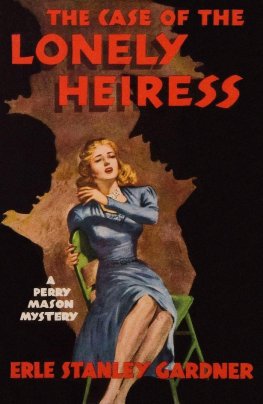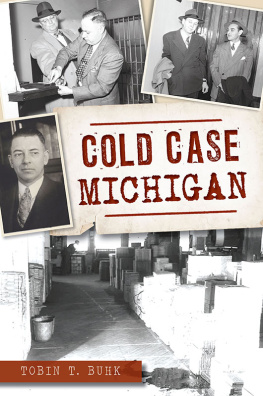

Published by The History Press
Charleston, SC 29403
www.historypress.net
Copyright 2013 by Tobin T. Buhk
All rights reserved
First published 2013
e-book edition 2013
Manufactured in the United States
ISBN 978.1.62584.095.0
Library of Congress Cataloging-in-Publication Data
Buhk, Tobin T.
The shocking story of Helmuth Schmidt : Michigans original lonely-hearts killer / Tobin T. Buhk.
pages cm
print edition ISBN 978-1-62619-017-7 (pbk.)
1. Schmidt, Helmuth, -1918. 2. Serial murderers--Michigan. 3. Murder--Michigan. I. Title.
HV6533.M5B84 2013
364.15232092--dc23
2013022883
Notice: The information in this book is true and complete to the best of our knowledge. It is offered without guarantee on the part of the author or The History Press. The author and The History Press disclaim all liability in connection with the use of this book.
All rights reserved. No part of this book may be reproduced or transmitted in any form whatsoever without prior written permission from the publisher except in the case of brief quotations embodied in critical articles and reviews.
To Ruth, Erika and Victoria, with love.
CONTENTS
PREFACE
Oakland County prosecuting attorney Glenn C. Gillespie looked out the front window. April showers bring May flowers, he muttered as he watched strings of light rainfall, causing a flickering effect that reminded him of the moving picture shows at the Oakland Theater. Despite the rain, a group of neighborhood kids had gathered across the street, careful to keep their distance from the death house.
Undersheriff Harry Cryderman handed Gillespie a gold pocket watch that one of the detectives found in a bedroom dresser drawer. Someone scratched several rows of numbers on the inside lid. The prosecutor ran his finger down the scratches until he came to the last set of numbers, 11-3-17, and immediately thought of the effervescent New Yorker who sought a new life in Royal Oak. After a brief courtship with a Detroiter she met through a matrimonial advertisement, Augusta Steinbach left a cushy job as a ladys maid in Manhattan to marry the man of her dreams. She disappeared on March 11, 1917, last seen entering the bungalow at 9 Oakdale Boulevard in Royal Oak.
Gillespie was running his fingers back up the sequence of numbers when he heard shouting from the backyard. Detective Harry Emerson, a private investigator working for the Ford Motor Company, had found something behind the garage. That rainy morning of April 21, 1918, investigators searched for clues about the fate of Augusta Steinbach. As the morning progressed, however, they realized that they had stumbled onto something much more complex. None of them had witnessed anything like it in their careers. Over the course of the next week, they would match wits with the Royal Oak Bluebeard, a criminal the Detroit Times called one of Americas master outlaws.
The case was so outrageous, so bizarre, that when the story broke on April 22, 1918, it captivated headlines for a week, pushing news of the Great War to the margins. A Pontiac Press Gazette reporter, in a front-page spread on April 22, 1918, called it one of the most sensational and interesting criminal cases ever developed in this countyNo story of fiction ever contained more thrills or romance.
Except this story is not fiction. The following narrative, I think, is a historically accurate depiction of the events as they occurred. The quotes are authentic, not fictionalized, culled from news reports, court documents and the scant documentary evidence still in existence after nearly a century. If a sources reliability is questionable, or if a source is suspected of sensationalizing some aspect of the case, it is documented in the notes. Should the reader desire to attempt a private investigation into this fascinating case, the notes also contain attribution for all sources used and consulted.
Reaching back through history to collar the Royal Oak Bluebeard was no easy task. Over the past few years, Ive played a historical detective of sorts, gathering clues in my attempt to unravel the serpentine trail he left behind. There are virtually no secondary sources on this case, so I had to re-create the investigation by traipsing through a thicket of sensationalized and often conflicting press reports.
Since the case never went to trial, where a jury could listen to testimony and give a verdict, the task of final judgment is left to the reader. Pay attention to the evidence, listen to the witnesses and evaluate possible ulterior motives as the various characters discuss their experiences with the Royal Oak Bluebeard.
There are certainly more gruesome crimes, but few are more relevant to our time. Although this story took place almost a century ago, anyone who participates in a chat room or an online dating service will recognize the lesson of this storya danger inherent in using a third-party service to find mates.
And for the true crime buff, there are fewer places more interesting to visit than Detroit in 1918, where county sheriffs stopped lynch mobs from enacting frontier justice, cops staged lineups in the front yards of victims, suspects sometimes limped away from interrogations with new injuries and reporters sometimes eavesdropped on interrogations and even posed questions to the accused.
Its a real trip. I hope you enjoy it as much as I did.
Part I
THE DOMESTIC AND THE SUITOR
LOVE LETTERS
New York City
February 3, 1917
It was a frigid morning in New York when Agnes Domaniecki said goodbye to her best friend Augusta Steinbach. She dreaded the moment when Augusta would leave for Detroit, where she planned to marry a man she had never laid eyes on before. It was the climax of a New World adventure that began three and half years earlier.
In the summer of 1913, about one year before Europe plunged into a conflict that would consume the entire continent, thirty-five-year-old Augusta Steinbach boarded a passenger shipthe Kronprinz Wilhelmen route from Cherbourg, France, to New York. She made the journey across the Atlantic to her new home with a married couple from New York, Charles and Lina Weber. As the ship steamed west, she wondered what her new life in the United States would be like.
In the Old World, she made her living as a ladys maid. She began as a domestic in Berlin around the turn of the century, working among Germanys aristocracy alongside Agnes Domaniecki. Later, the two women drifted to Paris, where they worked as domestics until 1913. With war looming, Paris was no place for German natives, so the two decided to change their milieu. Agnes took a job as a ladys maid in Kingston, Jamaica, while Augusta moved to the Big Apple.

Sketch of Augusta Steinbach made in 1918 by a Detroit News artist. Courtesy of the Detroit News Photo Archives.
The Kronprinz Wilhelm arrived at Ellis Island on June 24, 1913. Shortly after her arrival, Augusta found work among New Yorks elite, eventually taking a job as a ladys maid for the wife of a wealthy New York banker named Edward Heidelberg, who lived on West Fifty-fourth Street. The Heidelberg family adored the shy but bubbly girl from the German countryside.
Augusta Steinbach enjoyed life among the affluent and liked to spoil herself with expensive clothes and jewelry, but the one thing she yearned fora house and family of her owneluded her. It wasnt as if she had gone unnoticed. She had chocolate-brown hair, blue eyes and a full-bodied figure that some men found irresistible.
Next page










